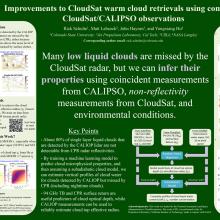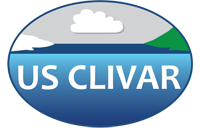Improvements to the CloudSat CWC-RVOD algorithm and implications for future cloud retrievals from space
Richard
Schulte
Colorado State University
Poster
A significant fraction of liquid clouds are not captured in R05 CloudSat radar-based products because the clouds are masked by surface clutter or have insufficient reflectivities. To account for these missing clouds, we train a random forest regression model to predict cloud optical depth and cloud top effective radius from other CloudSat and CALIPSO observables that do not include the radar reflectivity profile. By assuming a subadiabatic cloud model, we are then able to retrieve a vertical profile of cloud microphysical properties for all liquid-phase oceanic clouds that are detected by CALIPSO’s lidar but missed by CloudSat’s radar. Daytime estimates of cloud optical depth, cloud top effective radius, and cloud liquid water path are robustly correlated with coincident estimates from the MODIS instrument onboard the Aqua satellite. This new algorithm offers a promising path forward for estimating cloud microphysical properties of thin liquid clouds observed by CloudSat and CALIPSO at night, when MODIS observations that rely upon reflected sunlight are not available. More generally, this approach could be extended to other satellite missions such as EarthCARE and the Atmosphere Observing System. It points to the value of multi-sensor observations and the potential to combine such observations using machine learning.

Schulte-Rick-poster.pdf
(5.11 MB)
Meeting homepage
